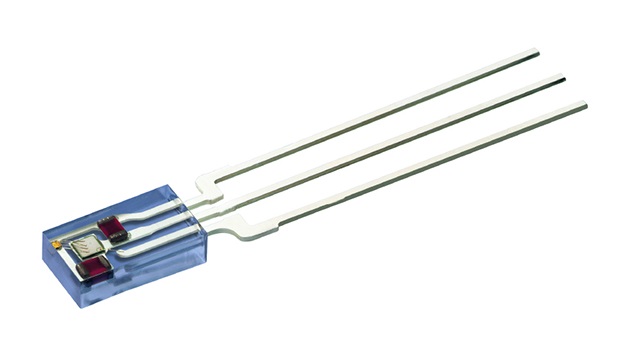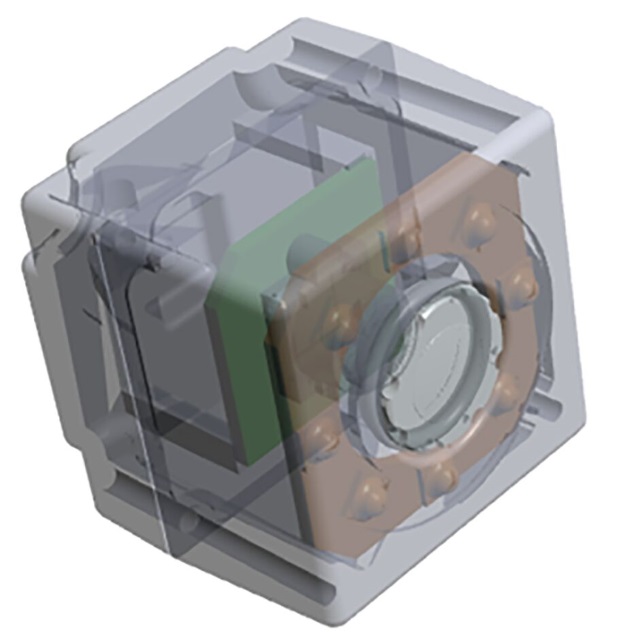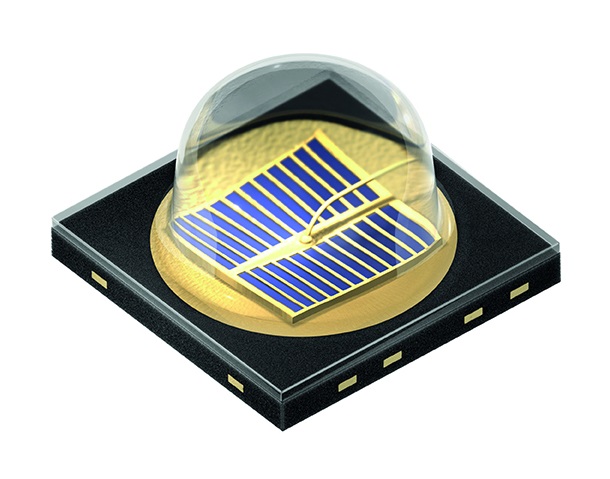By RAJEEV THAKUR,
IR Product Marketing Manager,
Osram Opto Semiconductors,
www.osram-os.com/
Low-cost LIDAR enables autonomous driving in urban environments
In the race to create the world’s first self-driving car, new ADAS (advanced driver assistance systems) – such as a low-cost (light detection and ranging) LIDAR detection system developed to meet 2018 Euro NCAP (New Car Assessment Program) Automatic Emergency Braking requirements – are helping to pave the way. LIDAR works on the principle of radar but uses light from a dedicated infrared pulsed laser. Current systems are large and expensive. The new Wideview LIDAR system from Phantom Intelligence is a compact, less expensive unit that has proven reliable for low-speed obstacle detection in city driving.
Phantom Intelligence developed the weather-resistant LIDAR system using infrared pulsed laser diodes and photodiodes from Osram Opto Semiconductors, which work to detect objects on the road and help prevent a collision. The lasers deliver a high efficiency of up to 40% at 70-W peak output power, achieving a long operating lifetime. The photodiodes are especially suitable for measuring short light pulses, given their short switching time. Original equipment manufacturers that incorporate Phantom’s LIDAR into their vehicles to enable active safety features can also realize cost savings and obtain better performance.
LIDAR can be mounted inside the windshield and behind the rearview mirror, an approach that provides better performance consistency than on the vehicle’s front bumper and reduces replacement costs in case of damage to the vehicle. This technology is ideal for low-end vehicles that need to meet the Euro NCAP Automatic Emergency Braking requirements for urban driving. As safety technologies evolve with regulations and autonomous driving, LIDAR, complemented by cameras and radar, could give automakers enough information on the surrounding environment to navigate fully autonomous vehicles.
European and U.S. NCAP regulations require that vehicles meet certain standards in order to get a five-star vehicle safety rating. With Osram’s lighting technology, Phantom Intelligence plans to make the next generation LIDAR systems even better in order to improve obstacle detection and collision mitigation solutions, increasing the safety of all vehicles.
“Our ultimate goal is to improve safety, spare worries and cut travel time,” said Jean-Yves Deschenes, president of Phantom Intelligence.

Phantom Intelligence and Osram have created a compact, less expensive LIDAR unit that can be used for low-speed obstacle detection in city driving. (Image: Phantom Intelligence)

Osram’s high power pulsed laser diodes with integrated driver simplify the design of laser systems and reduce their cost. (Image: Osram)
Advancements in driver safety
Driver monitoring is also an essential piece of technology needed for the advancement of autonomous driving. In scenarios where the driver needs to take back control from the car, a monitoring system will need to “watch” the drivers in order to give them adequate time to safely do so. Special image sensors for IR (infrared) are needed because the emitters used should match the sensitivity peak of the image sensor as closely as possible and provide adequate illumination without distracting the driver or causing eye safety issues.
Driver monitoring can warn a fatigued driver to pull over and rest. It also supports other ADAS features like lane departure warning and switching between autonomous and manual driving modes. In extreme cases, such as drunk driving, it can disable the vehicle. Until now, the technology has been fraught with visibility limitations at 940 nm infrared wavelengths. A new automotive camera system has been developed that works in both the visible and IR spectrum and is now available for original equipment manufacturers. The system combines an infrared emitter from Osram Opto Semiconductors with a new camera from Advanced Vision Systems to create the first infrared camera with exceptional image quality in visible (400-700 nm) and near infrared (940 nm) spectrums. Osram developed special automotive-qualified IR emitters that enabled Advanced Vision Systems to find the right balance between required illuminations for both camera and eye safety. Normally, this technology would require two different cameras and alternating filters.
Driver monitoring technology uses an IR camera with active illumination. The camera is mounted inside the vehicle and positioned toward the face of the driver to monitor their eyes and face. Active illumination from Osram IR 940 nm high power stack emitters provides light not perceptible by the human eye. The light is reflected from the driver’s face and captured by the image sensor.
Cameras currently in production do not work well at night or in poor lighting conditions. They do not produce quality images in the IR spectrum and need 850 nm emitters, which have a red glow that can be distracting to drivers because the human eye is more sensitive to this wavelength. The new camera from Advanced Vision Systems uses Osram´s 940 nm emitters SFH 4725S, which eliminate the red glow, use fewer LEDs and require less power consumption per LED. In addition to a more efficient and safer driver monitoring camera, the potential use in other automotive applications includes side view or surround view cameras for blind spot detection, rear view cameras for cross traffic alerts, and self-parking. It is an ideal driver monitoring solution that provides cost savings for other applications.

Advanced Vision Systems and Osram have partnered to create a camera that works in both the visible and infrared light spectrums without the use of mechanical filters. (Image: Advanced Vision Systems)

Osram’s SFH 4725S emitter is an automotive qualified 940 nm infrared LED with high efficiency. (Image: Osram)
Find more information on Phantom Intelligence at http://phantomintelligence.com//.
For more information on Advanced Vision Systems, visit http://www.advancedvisionsystems.com/.
For more information on Osram Opto Semiconductors’ laser diodes, photodiodes and infrared emitters, visit
Advertisement
Learn more about Osram Opto Semiconductors





